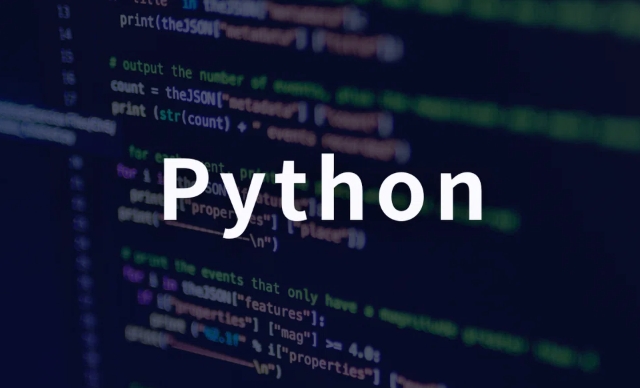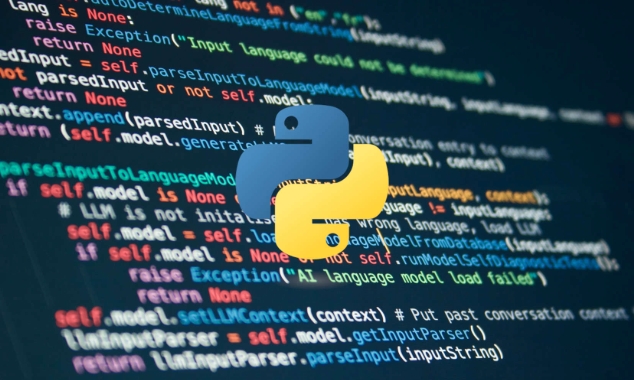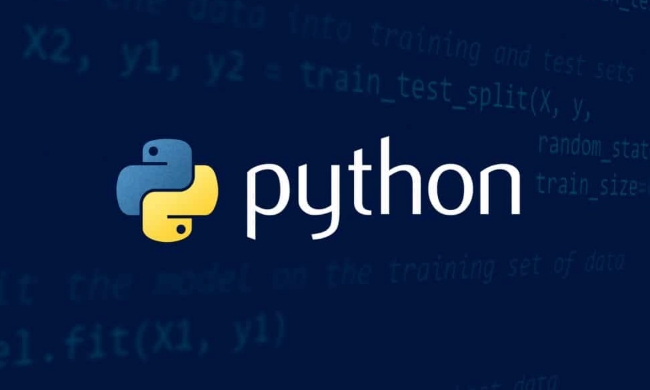Python is widely used in robot control and is suitable for building control system prototypes. 1. Use ROS to implement basic control logic, write scripts in Python to subscribe to sensor data, issue control instructions, such as creating nodes with the rospy module and controlling the robot to move for two seconds before stopping. 2. The control accuracy can be achieved through PID control, P adjusts the error intensity, I eliminates static errors, D suppresses overshoots, and can be implemented using the simple-pid library or custom classes. 3. Integrate computer vision for perception control, use OpenCV to identify image features, such as tracking red spheres and adjusting the direction of the car according to position, thereby realizing visual servo control tasks.

Python is a very practical tool when controlling a robot system. It not only has concise syntax, but also has rich library support, which can quickly build a control system prototype. Especially in academic research and industrial automation, Python has become one of the important languages for developing robot control logic.

1. Use ROS to implement basic control logic
ROS (Robot Operating System) is one of the most popular robot development frameworks at present, and Python is one of its main supported languages. You can subscribe to sensor data, issue control instructions, and even implement path planning by writing Python scripts.
- After installing the ROS environment, you can use the
rospymodule to create nodes. - Write a simple control script, such as moving the robot forward for two seconds and then stopping:
import rospy
from geometry_msgs.msg import Twist
def move():
rospy.init_node('robot_controller', anonymous=True)
pub = rospy.Publisher('/cmd_vel', Twist, queue_size=10)
rate = rospy.Rate(10) # 10Hz
move_cmd = Twist()
move_cmd.linear.x = 0.5 # Forward speed for _ in range(20): # Publish 20 times, each interval is 0.1 seconds, a total of 2 seconds pub.publish(move_cmd)
rate.sleep()
move_cmd.linear.x = 0
pub.publish(move_cmd)
if __name__ == '__main__':
try:
move()
except rospy.ROSInterruptException:
passThis method is suitable for basic motion control, sensor reading and other operations.

2. Control accuracy and feedback mechanism
Robot control is not just a simple command. It often requires closed-loop control, which is to add a feedback mechanism. PID control is one of the most common methods.
- P (proportion) : The larger the error, the stronger the output.
- I (integral) : Eliminates static errors.
- D (differential) : Suppresses overshoot.
It is actually not difficult to implement a PID controller in Python. You can use ready-made libraries such as simple-pid or write a class yourself:

pip install simple-pid
Sample code:
from pid import PID
import time
pid = PID(1.0, 0.1, 0.05, setpoint=100)
current_value = 0
for _ in range(100):
output = pid(current_value)
current_value = output * 0.1 # Assume that the system response is 10% of the current output
print(f"Current: {current_value:.2f}, Output: {output:.2f}")
time.sleep(0.1)This control method is suitable for motor speed control, robotic arm angle adjustment and other scenarios.
3. Integrate computer vision for perception control
Many robots now need to "see" the environment to react. Python's OpenCV and deep learning frameworks (such as PyTorch and TensorFlow) can help you achieve vision-based control.
For example, you want to make a car that automatically tracks red spheres:
- Capture images with a camera.
- Use OpenCV to find out the location of the red area.
- Adjust the steering of the car according to the position offset.
Some core codes are as follows:
import cv2
import numpy as np
cap = cv2.VideoCapture(0)
While True:
_, frame = cap.read()
hsv = cv2.cvtColor(frame, cv2.COLOR_BGR2HSV)
lower_red = np.array([0, 120, 70])
upper_red = np.array([10, 255, 255])
mask = cv2.inRange(hsv, lower_red, upper_red)
contours, _ = cv2.findContours(mask, cv2.RETR_TREE, cv2.CHAIN_APPROX_SIMPLE)
if contours:
large = max(contours, key=cv2.contourArea)
x, y, w, h = cv2.boundingRect(largest)
center_x = xw // 2
# Determine the position of the ball and send the control command if center_x < 300:
print("Turn left")
elif center_x > 340:
print("Turn right")
else:
print("Go straight")
cv2.imshow('frame', frame)
if cv2.waitKey(1) == ord('q'):
break
cap.release()
cv2.destroyAllWindows()This idea can be extended to more complex visual servo control tasks.
Basically that's it. Python is very flexible in robot control, and can be competent from the underlying hardware communication to the upper-level logic control. As long as you understand the system structure and control logic well, you can write efficient and reliable code.
The above is the detailed content of Python Robotics Control Systems. For more information, please follow other related articles on the PHP Chinese website!

Hot AI Tools

Undress AI Tool
Undress images for free

Undresser.AI Undress
AI-powered app for creating realistic nude photos

AI Clothes Remover
Online AI tool for removing clothes from photos.

Clothoff.io
AI clothes remover

Video Face Swap
Swap faces in any video effortlessly with our completely free AI face swap tool!

Hot Article

Hot Tools

Notepad++7.3.1
Easy-to-use and free code editor

SublimeText3 Chinese version
Chinese version, very easy to use

Zend Studio 13.0.1
Powerful PHP integrated development environment

Dreamweaver CS6
Visual web development tools

SublimeText3 Mac version
God-level code editing software (SublimeText3)

Hot Topics
 Polymorphism in python classes
Jul 05, 2025 am 02:58 AM
Polymorphism in python classes
Jul 05, 2025 am 02:58 AM
Polymorphism is a core concept in Python object-oriented programming, referring to "one interface, multiple implementations", allowing for unified processing of different types of objects. 1. Polymorphism is implemented through method rewriting. Subclasses can redefine parent class methods. For example, the spoke() method of Animal class has different implementations in Dog and Cat subclasses. 2. The practical uses of polymorphism include simplifying the code structure and enhancing scalability, such as calling the draw() method uniformly in the graphical drawing program, or handling the common behavior of different characters in game development. 3. Python implementation polymorphism needs to satisfy: the parent class defines a method, and the child class overrides the method, but does not require inheritance of the same parent class. As long as the object implements the same method, this is called the "duck type". 4. Things to note include the maintenance
 Python Function Arguments and Parameters
Jul 04, 2025 am 03:26 AM
Python Function Arguments and Parameters
Jul 04, 2025 am 03:26 AM
Parameters are placeholders when defining a function, while arguments are specific values ??passed in when calling. 1. Position parameters need to be passed in order, and incorrect order will lead to errors in the result; 2. Keyword parameters are specified by parameter names, which can change the order and improve readability; 3. Default parameter values ??are assigned when defined to avoid duplicate code, but variable objects should be avoided as default values; 4. args and *kwargs can handle uncertain number of parameters and are suitable for general interfaces or decorators, but should be used with caution to maintain readability.
 Explain Python generators and iterators.
Jul 05, 2025 am 02:55 AM
Explain Python generators and iterators.
Jul 05, 2025 am 02:55 AM
Iterators are objects that implement __iter__() and __next__() methods. The generator is a simplified version of iterators, which automatically implement these methods through the yield keyword. 1. The iterator returns an element every time he calls next() and throws a StopIteration exception when there are no more elements. 2. The generator uses function definition to generate data on demand, saving memory and supporting infinite sequences. 3. Use iterators when processing existing sets, use a generator when dynamically generating big data or lazy evaluation, such as loading line by line when reading large files. Note: Iterable objects such as lists are not iterators. They need to be recreated after the iterator reaches its end, and the generator can only traverse it once.
 Python `@classmethod` decorator explained
Jul 04, 2025 am 03:26 AM
Python `@classmethod` decorator explained
Jul 04, 2025 am 03:26 AM
A class method is a method defined in Python through the @classmethod decorator. Its first parameter is the class itself (cls), which is used to access or modify the class state. It can be called through a class or instance, which affects the entire class rather than a specific instance; for example, in the Person class, the show_count() method counts the number of objects created; when defining a class method, you need to use the @classmethod decorator and name the first parameter cls, such as the change_var(new_value) method to modify class variables; the class method is different from the instance method (self parameter) and static method (no automatic parameters), and is suitable for factory methods, alternative constructors, and management of class variables. Common uses include:
 How to handle API authentication in Python
Jul 13, 2025 am 02:22 AM
How to handle API authentication in Python
Jul 13, 2025 am 02:22 AM
The key to dealing with API authentication is to understand and use the authentication method correctly. 1. APIKey is the simplest authentication method, usually placed in the request header or URL parameters; 2. BasicAuth uses username and password for Base64 encoding transmission, which is suitable for internal systems; 3. OAuth2 needs to obtain the token first through client_id and client_secret, and then bring the BearerToken in the request header; 4. In order to deal with the token expiration, the token management class can be encapsulated and automatically refreshed the token; in short, selecting the appropriate method according to the document and safely storing the key information is the key.
 What are Python magic methods or dunder methods?
Jul 04, 2025 am 03:20 AM
What are Python magic methods or dunder methods?
Jul 04, 2025 am 03:20 AM
Python's magicmethods (or dunder methods) are special methods used to define the behavior of objects, which start and end with a double underscore. 1. They enable objects to respond to built-in operations, such as addition, comparison, string representation, etc.; 2. Common use cases include object initialization and representation (__init__, __repr__, __str__), arithmetic operations (__add__, __sub__, __mul__) and comparison operations (__eq__, ___lt__); 3. When using it, make sure that their behavior meets expectations. For example, __repr__ should return expressions of refactorable objects, and arithmetic methods should return new instances; 4. Overuse or confusing things should be avoided.
 How does Python memory management work?
Jul 04, 2025 am 03:26 AM
How does Python memory management work?
Jul 04, 2025 am 03:26 AM
Pythonmanagesmemoryautomaticallyusingreferencecountingandagarbagecollector.Referencecountingtrackshowmanyvariablesrefertoanobject,andwhenthecountreacheszero,thememoryisfreed.However,itcannothandlecircularreferences,wheretwoobjectsrefertoeachotherbuta
 Python `@property` decorator
Jul 04, 2025 am 03:28 AM
Python `@property` decorator
Jul 04, 2025 am 03:28 AM
@property is a decorator in Python used to masquerade methods as properties, allowing logical judgments or dynamic calculation of values ??when accessing properties. 1. It defines the getter method through the @property decorator, so that the outside calls the method like accessing attributes; 2. It can control the assignment behavior with .setter, such as the validity of the check value, if the .setter is not defined, it is read-only attribute; 3. It is suitable for scenes such as property assignment verification, dynamic generation of attribute values, and hiding internal implementation details; 4. When using it, please note that the attribute name is different from the private variable name to avoid dead loops, and is suitable for lightweight operations; 5. In the example, the Circle class restricts radius non-negative, and the Person class dynamically generates full_name attribute






